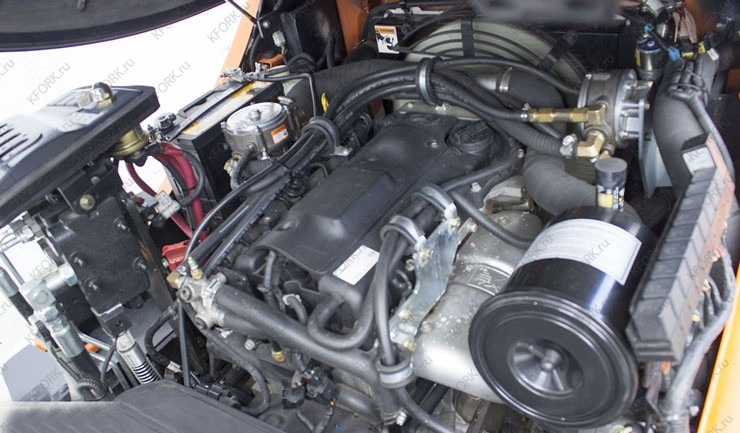When we talk about performance cars, muscle builds, or even just maintaining a reliable daily driver, it’s easy to get caught up in the high-profile stuff—engines, turbos, exhaust systems, the works. But let’s be honest: the smallest parts often play the biggest roles in keeping your vehicle running smoothly.
Today, we’re giving credit where credit is due—to three overlooked but essential components: the exhaust hanger, cooling system fittings, and the mighty cat clamp.
They may not be the first things you think of when upgrading your ride, but trust us—without these unsung heroes, you’re one pothole away from problems.
Let’s get into the nuts and bolts of it (literally).
Table of Contents
Toggle1. The Exhaust Hanger: Small Bracket, Big Job
You ever hear a rattle under your car and think, “Eh, probably nothing”? That’s your first mistake. Often, that rattle is your exhaust system shifting, bouncing, or even dragging—thanks to a busted or worn exhaust hanger.
What Exactly Is an Exhaust Hanger?
An exhaust hanger is a rubber or polyurethane mount that holds your exhaust system securely in place beneath your car. It absorbs vibration, prevents metal-on-metal contact, and keeps the exhaust aligned properly with the rest of your vehicle’s structure.
Why It Matters:
-
Prevents Vibration Damage: Without proper support, exhaust pipes can vibrate and crack.
-
Keeps Things Quiet: No more annoying banging sounds from pipes hitting the undercarriage.
-
Protects Other Components: A sagging exhaust can strain your manifold, catalytic converter, or O2 sensors.
Quick Tip:
Upgrading to reinforced or polyurethane hangers can be a game-changer for high-performance or off-road setups. They offer better durability, especially under heat and stress.
2. Cooling System Fittings: The Silent Guardians of Engine Health
Let’s talk about your car’s ability to keep its cool. Whether you’re stuck in traffic on a sweltering summer day or hammering it on the track, your engine generates a ridiculous amount of heat. And guess what’s keeping that heat in check? Your cooling system fittings.
What Are Cooling System Fittings?
These are the connectors, elbows, and adapters that allow coolant to flow between your radiator, engine block, heater core, and other critical areas. They’re usually made from plastic, aluminum, or brass and come in a variety of configurations—barbed, threaded, quick-disconnect, and more.
Why They Deserve More Respect:
-
Leak Prevention: Quality fittings seal tight, reducing the risk of coolant leaks.
-
Heat Resistance: Good fittings can handle high-temperature, high-pressure environments.
-
Longevity: Durable materials prevent corrosion and fatigue over time.
Table: Common Cooling System Fittings & Their Uses
| Fitting Type | Common Material | Use Case |
|---|---|---|
| Barbed | Aluminum/Plastic | Hose connections |
| Quick-disconnect | Plastic/Metal | Modern cooling systems |
| Threaded Adapter | Brass/Aluminum | Radiators, temperature sensors |
| 90-Degree Elbow | Plastic | Tight spaces and routing bends |
So the next time you replace a hose, thermostat, or radiator, don’t forget to inspect and upgrade those cooling system fittings. They’re your first line of defense against a boiling-hot breakdown.
3. Cat Clamp: The Unsung Hero Against Theft and Leaks
We’re living in a time when catalytic converters have become targets for thieves—thanks to the precious metals inside. But even if theft isn’t a concern in your area, the connection between your exhaust and cat is crucial. Enter the cat clamp.
What Is a Cat Clamp?
A cat clamp is a specially designed clamping system that secures your catalytic converter to your exhaust system. Originally designed to prevent theft, it also offers better sealing and stability than standard exhaust clamps or welds.
Why You Might Need One:
-
Anti-Theft Protection: Thieves will think twice when they see reinforced clamps and cables around your cat.
-
Improved Seal: No exhaust leaks, better emissions performance, and smoother engine operation.
-
Easier Install & Maintenance: Unlike welds, clamps make removal and replacement much simpler.
Bonus: A cat clamp can also be used to secure connections between other exhaust components—great for DIY upgrades or repairs.
Real-World Story: What Happens When You Skip the “Small Stuff”
A friend of mine once did a full aftermarket exhaust install. Custom headers, high-flow cat, performance muffler—the works. But he reused his old, cracked exhaust hangers and overlooked the warped cooling system fittings near the radiator. Oh, and he skipped installing a proper cat clamp, thinking the weld would be enough.
Two months later?
-
His exhaust sagged and cracked at the downpipe.
-
The cooling system sprung a leak from a split plastic fitting.
-
And the weld on his catalytic converter started failing, triggering a check engine light.
Total repair cost: $850.
Moral of the story? These parts may be small, but their impact is anything but.
Wrapping It Up: Respect the Little Things
Cars are like orchestras—every part, no matter how small, plays a role in the harmony. If your exhaust hanger fails, the whole system suffers. If your cooling system fittings leak, your engine overheats. And if you skip a cat clamp, you risk performance, safety, and even theft.
These components aren’t just accessories—they’re essentials.
Pro Tips to Keep Your System in Sync:
-
Inspect exhaust hangers for wear every 10,000 miles
-
Upgrade plastic cooling fittings to metal for durability
-
Use anti-seize compound when installing a cat clamp for easier maintenance
-
Don’t wait until something breaks—replace these parts proactively
Your car deserves more than just flashy upgrades.
Give the humble hardware some love—it’s what holds your ride together, literally.
Would you like this formatted into a downloadable checklist for your audience or turned into an email series for your shop or blog? I can help with that too.
